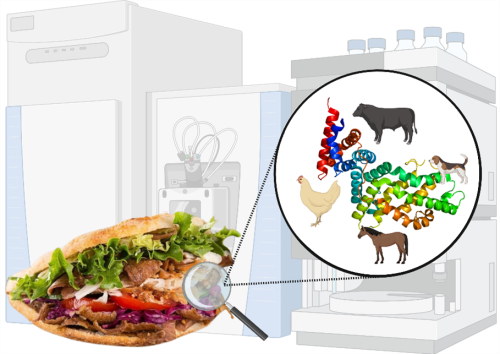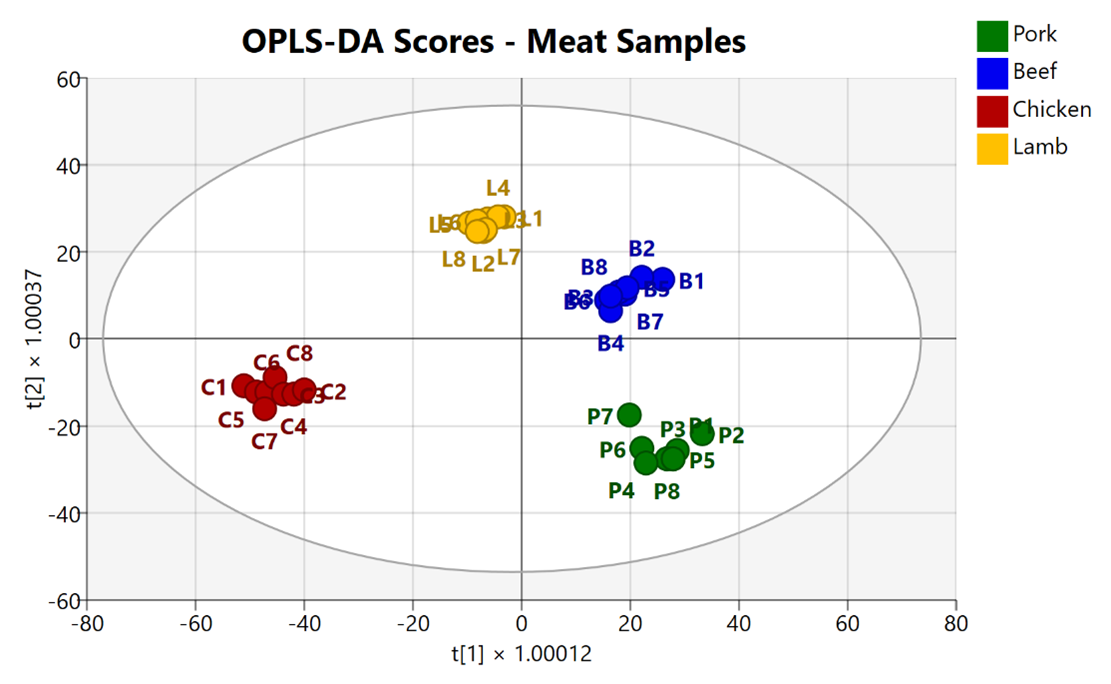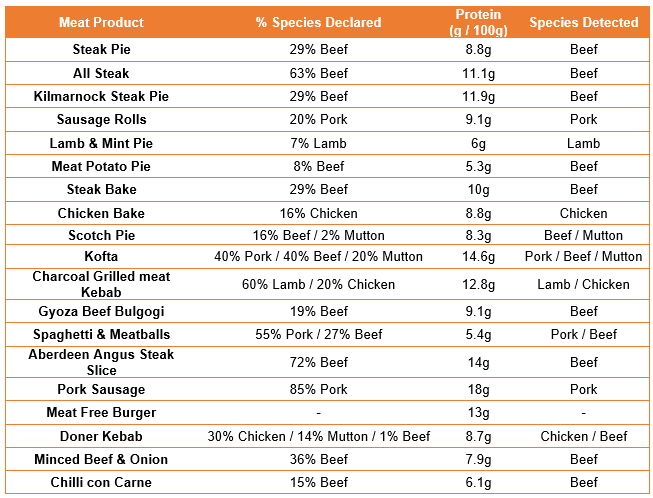Food fraud costs the UK around £2 billion per year, and improving testing methods is key to tackling this issue. However, current techniques often lack the speed and accuracy needed to detect mislabelled meat products. Researchers at the Rowett Institute have developed a cutting-edge method called MEATiCode, which can simultaneously identify multiple meat species in a single processed food sample.

Stage
Directory of Expertise
Purpose
Food fraud in the meat industry is a growing concern. Cases of mislabelled or adulterated meat have made consumers question what they're eating and whether it's safe. Ensuring that meat products are genuine is vital for avoiding allergens and harmful additives as well as protecting the value of high-quality meats, and the cultural traditions associated with them.
Fraudsters have a strong financial incentive to swap expensive meats like beef or lamb for cheaper alternatives, making it harder for honest suppliers and regulators to maintain trust in the industry. To combat this, scientists have developed various testing methods, including DNA analysis, isotope testing and liquid chromatography-mass spectrometry (LC-MS). However, these techniques must take into account factors such as how the meat is processed and what ingredients are added, which can affect accuracy.
In a previous blog post, we explained how we developed an LC-MS proteomics method to differentiate between different types of meat. If you missed it, please check it out! Now we're excited to share our latest results showing how well our method works on processed meat products found in supermarkets.
Results
Our method successfully identified four types of meat—beef, chicken, lamb, and pork—as shown in Figure 1. Each dot in the graph represents a sample, and each sample contains thousands of proteins and peptides which make up what we call ‘protein’ in meat. To pinpoint which meat is which, we selected peptides (the building blocks of proteins) unique to each species and combined them into artificial protein sequences called MEATiCode. These MEATiCodes act like fingerprints, allowing us to determine the species present in a sample.
We then uploaded the MEATiCode database into our LC-MS software. When we tested processed meat products containing multiple species, our method quickly identified exactly what was inside, helping us determine whether a product was correctly labelled or potentially fraudulent. Figure 2 outlines this process.

Figure 1: The analysis clusters samples from the same species together (coloured dots), showing our method can reliably differentiate the species based on their peptides and proteins.

Figure 2: The MEATiCode workflow, from sample preparation (homogenisation, digestion, and purification) to LC-MS analysis, where we match detected peptides to our MEATiCode database. If a product contains only the species listed on its label, it’s authentic. If there’s a mismatch, it’s fraudulent.
After optimizing our method, we found that we could detect species present at just 0.5% of a meat mixture. To test how well this works in real-world conditions, we analysed a range of supermarket pies and meat products, even those with extra ingredients like flour, salt, margarine, and seasoning.
What We Found
We tested 19 different meat products (see Table 1) and found two cases of mislabelling:
Doner Kebab – The label claimed it contained 14% mutton, but we didn’t find any at all.
Charcoal Grilled Meat Kebab – The label listed 60% lamb and 20% chicken, but our test found twice as much chicken as lamb.
These findings highlight how MEATiCode can be used to detect fraud and ensure consumers get what they pay for.
Table 1. Meat products tested using MEATiCode method.

Benefits
MEATiCode represents a huge step forward in the fight against food fraud. It provides a highly accurate and reliable way to confirm what's really in meat products. By combining a unique peptide database with advanced proteomic analysis, it can identify multiple meat species in a single test, making food authentication faster and more accurate. With this method, we can protect consumers, support honest suppliers, and improve food safety. As testing methods evolve, we hope to see more widespread adoption of MEATiCode in quality control and regulatory frameworks worldwide.
One of its biggest advantages is that it's easy to use in any proteomics laboratory and can detect tiny amounts of contamination - as little as 0.5%. And it works not only on fresh meat, but also on processed and cooked products, making it a valuable tool for food safety and quality control.
In addition to detecting mislabelling, MEATiCode could be adapted to detect food allergens such as nuts, fish and dairy products, extending its role in food safety. Future research will focus on expanding the peptide database to cover more food products, ensuring even greater accuracy and reliability in detecting food fraud across different industries.